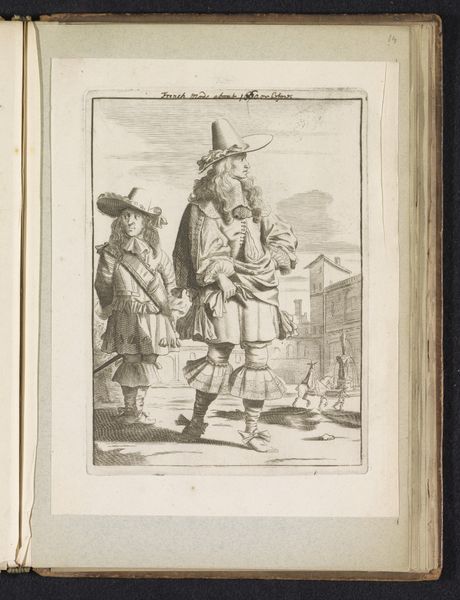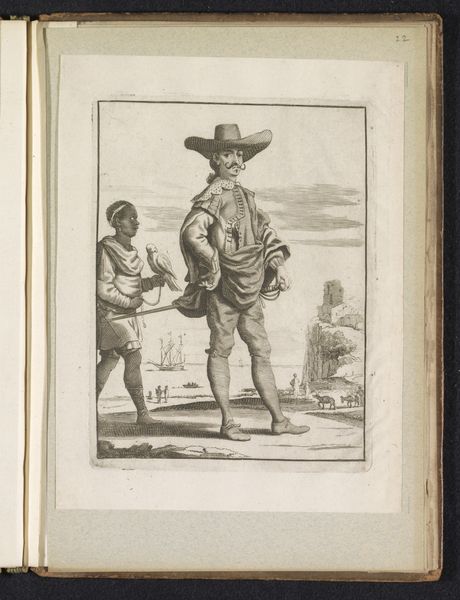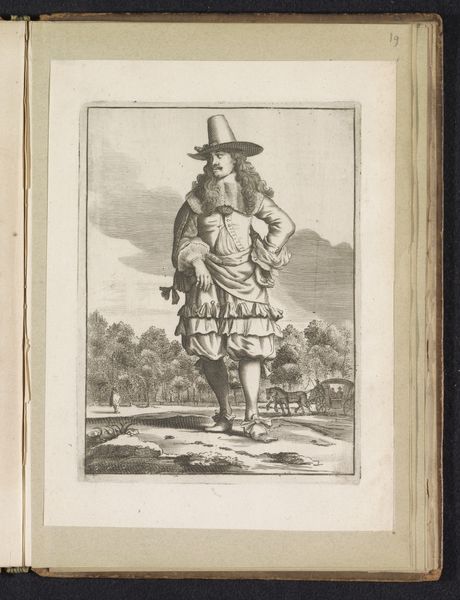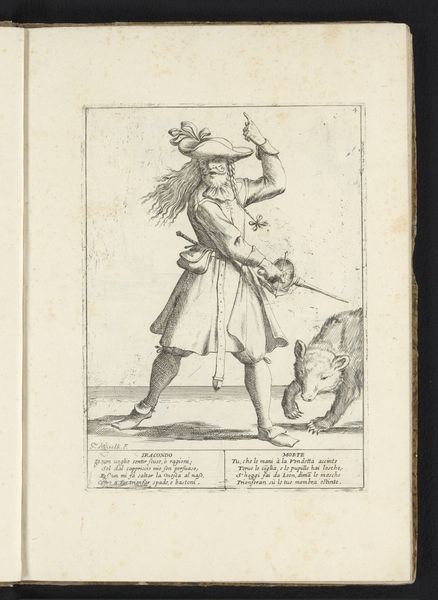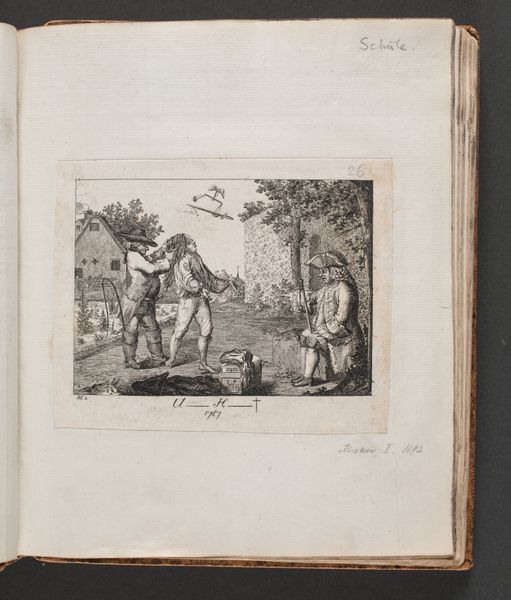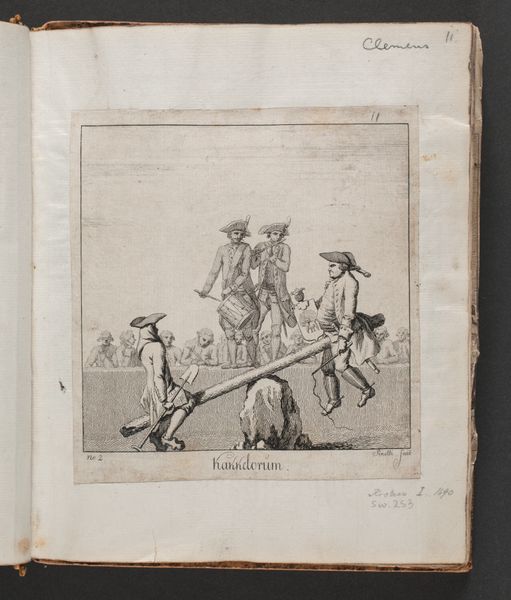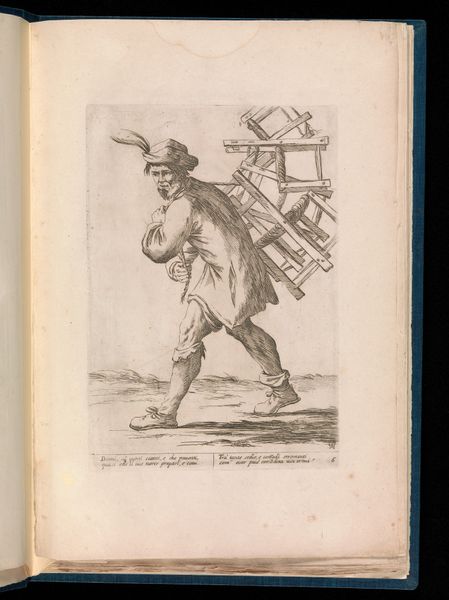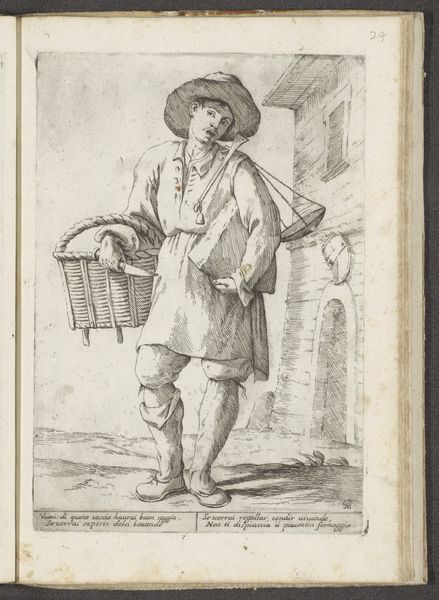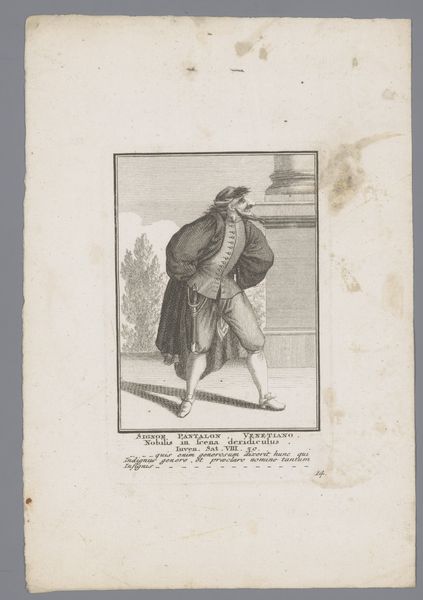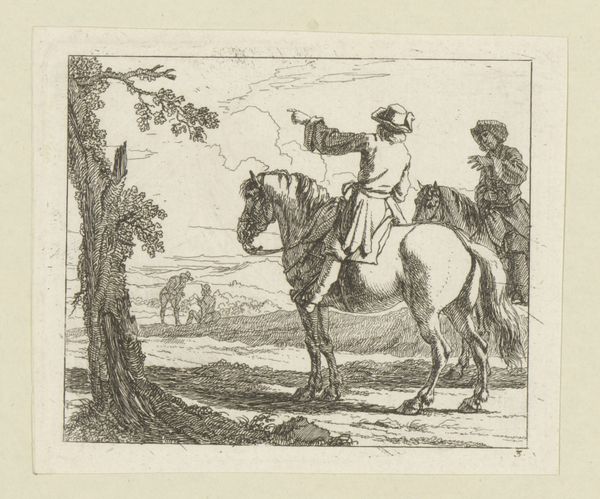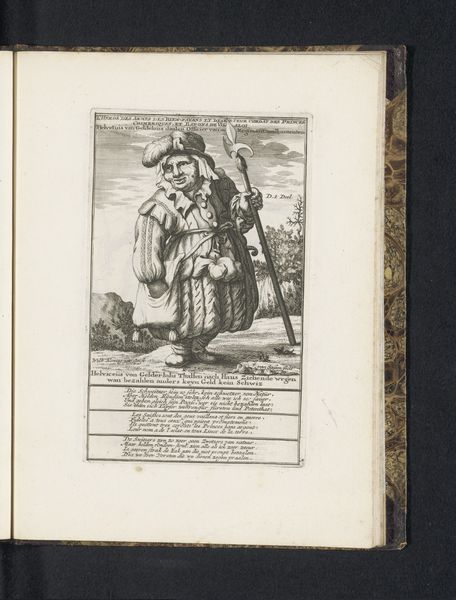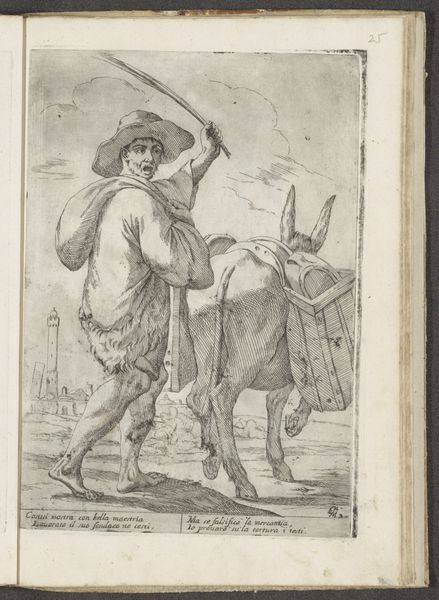
Ruiter staand in landschap, gekleed volgens de mode omstreeks 1660 c. 1660
0:00
0:00
print, engraving
#
portrait
#
baroque
# print
#
landscape
#
genre-painting
#
engraving
Dimensions: height 176 mm, width 128 mm
Copyright: Rijks Museum: Open Domain
Editor: This is "Ruiter staand in landschap, gekleed volgens de mode omstreeks 1660," or "Horseman Standing in a Landscape, Dressed in the Fashion of around 1660," created around 1660 by Jan van Troyen. It's an engraving housed at the Rijksmuseum. The detail achieved through the printmaking process is quite striking! What draws your eye to this piece? Curator: As a materialist, I'm fascinated by the socioeconomic implications of engravings like this. Think about the accessibility that printmaking offered, distributing images to a wider audience than, say, an oil painting ever could. This particular engraving captures a figure dressed in the height of 1660s fashion. It wasn’t just about aesthetic pleasure. How do you think that affected social perceptions and material aspirations of the merchant class in the Dutch Golden Age? Editor: That's a fantastic point. It makes me consider the consumerism of the time, the material aspirations as you say. It's almost like an early fashion magazine. Do you think the detail in the clothing - its material rendering - contributes to its function? Curator: Absolutely. The very act of rendering those details – the lace, the cut of the jacket – functions as a visual inventory, fueling desires and dictating trends. It shows a desire for this fashion but it also propagates the creation of the products, influencing tailors and merchants to emulate the featured style. Engravings such as these acted as crucial drivers within a burgeoning market economy, creating trends while democratizing art forms for an emerging capitalist audience. It served commercial ends more than artistic ones, perhaps. Editor: I never thought of it that way, as a tool for consumption! Seeing it in relation to labour practices really does give it a new meaning for me. Curator: Exactly, the medium informs the message. The relative inexpensiveness of production democratized high fashion in interesting ways.
Comments
No comments
Be the first to comment and join the conversation on the ultimate creative platform.
